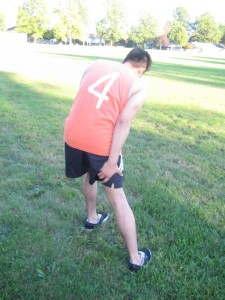The treatment for varicose eczema is focused on improving the condition of the skin, manage the symptoms as well as promote proper circulation or blood flow in the area. Among many individuals, this typically involves long-term treatment with emollients, topical corticosteroids and compression stockings.
Self-care measures
It is important to note that there are measures that can minimize the symptoms of varicose eczema as well as prevent further issues such as the following:
- Avoid injuring the skin since it increases the risk for ulcer formation
- Elevate the legs while at rest such as propping the feet on some cushions since this reduces the swelling
- Stay active to improve the circulation and maintain a healthy weight
It is important to note that fluid can accumulate in the lower legs if the individual sits or stands for extended periods, thus it is vital to stay active. Take note that walking will work out the muscles as well as helps push the blood via the veins to the heart. In addition, it is recommended to flex the feet and rise up the toes or bend down at the knees.

Emollients
Emollients or moisturizers are applied directly on the skin to minimize water loss. These are often utilized to manage dry or scaly skin issues such as eczema.
A variety of emollients are available over-the-counter but if the individual has varicose eczema, it is best to consult a doctor so that the right product can be given. An emollient is applied at least twice a day even if there are no symptoms. Continue using emollients during flare-ups of varicose eczema since this is the time when the skin requires the most moisture. During the application, it must be done frequently and in generous amounts during flare-ups.
Topical corticosteroids
Once the skin is inflamed during flare-ups, the doctor might prescribe a topical corticosteroid to rapidly minimize the inflammation. There are varying strengths of topical corticosteroids depending on the severity of the varicose eczema.
When corticosteroids are used, apply only on the affected areas based on the amount and frequency instructed by the doctor. In most cases, the application is once a day. You have to initially apply the emollient and wait for 30 minutes before applying the topical corticosteroid. It should be used for 7-14 days and continue the application for 48 hours after the flare-up cleared up.
Compression stockings
There are medicated compression stockings that are specifically designed to steadily compress the legs to help improve the circulation. The stockings are tight at the ankle and become looser as it moves up the leg. The stockings promote the flow of blood up to the heart.
The stockings should be worn upon getting up in the morning and remove them when going to bed. Using the stockings can be uncomfortable during warm weather but it is vital to use them correctly to get the most benefit.
